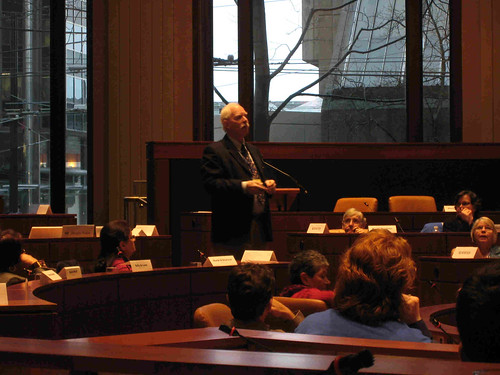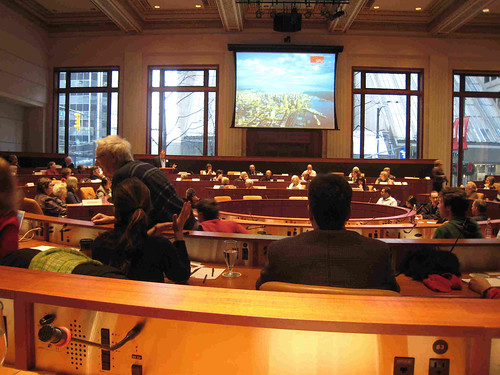In his knowstv.ca website, Bill Tieleman tries to make the case that we shouldn’t vote to change to the Single Transferable Voting system (BC-STV) because it doesn’t guarantee proportionality:
Funny how he doesn’t use a 7 or 6 seat riding for his example which is where the Green Party would be making their gains. What's also curious is if a two or three seat riding is supposed to be so bad, then how are our current single member ridings any better?
- Q: Does STV give proportional results? That is, if a party gets 10% of the popular vote in B.C. would it win 10% of the seats?
- A: No. STV supporters say it is more proportional than first-past-the-post (FPTP) but there is no guarantee that seats won will correspond with popular vote. Proportional representation electoral systems such as List PR are designed to ensure such proportionality, not STV.
If a party got 10% of the vote under STV it would be unlikely to win a seat in any constituency in BC. Look again at the example of a constituency of 100,000 voters electing three members: the number of votes needed to win is 25,001, which means that a party would need at least 25% support to win one seat of the three.
Mr. Tieleman’s buddy, David Schreck, former MLA, adviser to Premier Glen Clark and now Secretary-Treasurer of the No STV campaign, has his own website for disseminating misinformation about BC-STV called Strategic Thoughts. In one of his essays (November 1st, 2004), Mr. Schreck presents a hypothetical situation under BC-STV where a Green Party candidate would win 10% of the vote without getting elected. Of course, he relies on this dream scenario playing out by making the assumption that out of 100,000 voters, not a single one is willing to vote outside of party lines.
A scenario that is so unlikely to the point of absurdity. Notice also how in both examples, they only look at single ridings instead looking at elections as a whole. When BC-STV supporters talk about proportionality, we're referring to the results of an entire election, not individual ridings.
Now on January 13th, 2009 during his CKNW debate with Shoni Field, Mr. Schreck actually did point to one election in Malta in 1981 where one party one more seats while the other party won more of the popular vote. But what he failed to mention was that in that election, the parties were only separated by a margin of 1.8% in the popular vote, with the seat distribution being 34 to 31, almost a tie.
No matter what electoral system is used, there’s always a risk of distortion in close races. The point is that under our current system, distortions occur even when the race isn’t close, such as when parties win 50-60% of the seats with only 40% of the vote.
The thing is if you take a step back and look at election results in Northern Ireland, the Republic of Ireland and Malta over the long term, you see that the percentage of seats a party wins is consistently around 2-3% of their share of the popular vote. Election results more closely mirror the percentages of votes that have been cast. That’s how it should be. Conversely, one only needs to look at our own country to see that in our FPTP system, a party's share of the seats is consistently off by as much as 10% to 20% of the their share of the popular vote.
So while BC-STV may not be perfectly proportional, it’s a heck of a lot more proportional than our current system. That‘s the whole point.
Back to Criticisms Mainpage.





